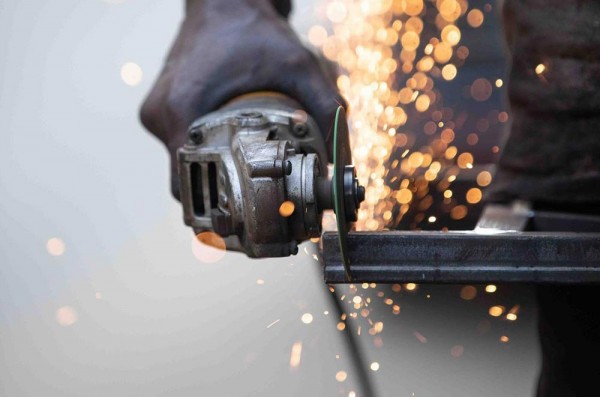In our store we offer various tile profiles and skirting boards made of aluminum. The range extends from angle profiles, stair profiles to balcony profiles. But how are these shapes created in the first place? The tile profiles are created by the methods of sawing, punching or milling. Today we would like to give you a short introduction to the processing of aluminum profiles.
Why aluminum profiles at all?
The light weight and good weather resistance are among the advantages of the material. It can be used not only in the external area super, no also the assembly of the profile goes fast and simply. Due to the low weight of the material and the surface properties, easy cleaning of the rail is possible. The surfaces of many aluminum profiles are covered with a protective layer. This not only contributes to improved weathering protection, but also enhances the appearance.
Processing of aluminum profiles
In principle, aluminum profiles can be processed with the machines that are also used for woodworking. However, it is necessary to use, for example, a saw blade or drill for metal.
Machining of aluminum profiles belongs to metal processing, which is often referred to as "cutting processes". This includes all processes by means of which metal workpieces are brought into shape, such as cutting, sawing, drilling and milling. It is particularly important to choose the right tool for machining, with the appropriate rake angle, feed rate and cutting angle.
Cutting & sawing aluminum
Many craftsmen are familiar with the miter cutting of aluminum profiles. This method is usually used when tile rails are to be cut individually at the desired angle.
As a light metal, aluminum has very good thermal conductivity. For this reason, sawing profiles becomes somewhat more complicated. If you use the wrong tool, or do not adjust the feed and speed, you will quickly notice the poor quality of the cut edges.
To cut aluminum, we recommend working with a metal saw, but with the right saw blade, circular or jigsaws will also work. A fine-toothed saw blade, a large rake angle and the speed should be set relatively high are sufficient for processing.
Cutting by hand?
Aluminum could be cut without the help of machines. This possibility exists for very thin profiles. Sheet metal shears can be used to cut well up to 1.5 mm thickness. A cutter knife can be used to cut sheets of aluminum up to 0.5 mm.
Cooling during sawing
 Aluminum angle profile
Aluminum angle profileWhen sawing profiles particularly quickly, the aluminum can often become very hot and, if necessary, chips of the light metal can also stick to the tool. To prevent this, you should add a lubricant or coolant during machining.
In addition, cooling the cutting grants a much higher quality cutting edge. The service life of the saw blade is extended to three or four times.
Drilling aluminum profiles
Drilling of aluminum is one of the most common processes in the processing of this material. For example, in our store you can find aluminum profiles for screwing. By drilling a thread into an aluminum profile, the profiles are particularly suitable for attaching screws and joints. These holes are usually created with a twist drill, a deep hole drill, a drill rod or also with a circular cutter. The latter is also used for machining steel or copper.
Drilling aluminum is not easy, however, even with the right tool. It is important to ensure that the profile is securely fixed and that the pressure exerted on the metal should always be as low as possible. Too high a speed is also not good, because too high a pressure can cause white fracture. White fracture is the name given to the optical effect caused by microscopic cracks in the material when metals are highly stressed or overstressed during machining. This changes the properties at this point (cracks, refraction of light at the crack) and the surface appears almost white in some places. Slow, clean work is of great advantage here.
For larger holes, you should first pre-drill with a small drill bit and then carefully re-drill to prevent fractures or cracks on the surface. For a long durability of the equipment or tools we recommend to treat them with a cutting/drilling oil.
Welding or gluing aluminum profiles
Nowadays there are several ways and aluminum rails to connect with each other. If you glue the aluminum tile profiles, their strength is maintained. It works just as safely if you weld the profiles together.
Bending aluminum profiles - is it possible?
 Curver
CurverYes you can. We offer flexible tile rails for bending in our store. From angle profiles, to stair profiles, to skirting boards, it's all here. These bendable profiles are often used for tiles with rounded edges and give your room that certain something.
For bending aluminum profiles, we recommend using a curver. This not only makes bending easier for you, but also bends them exactly to the desired radius.
The right protection
Working with metal is much louder than working with wood. For this reason, you should not do without good hearing protection when cutting aluminum profiles. To protect your eyes from flying aluminum chips, we recommend safety glasses.
If you still have questions, we will be happy to help!
We wish you success
the team from Alles zum Fliesen

